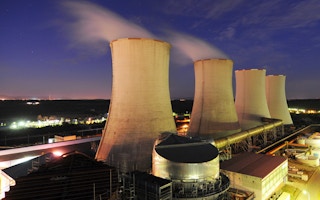South Korea has revised down its future reliance on nuclear power, although growing energy demand and the shutdown of aging reactors mean it is still likely to need more nuclear-fired plants over the coming two decades.
Asia’s fourth-largest economy has been under pressure to curb its use of nuclear power in the wake of a safety scandal that led to the shutdown of some nuclear reactors to replace parts supplied with fake safety certificates.
The energy ministry said on Tuesday it has changed its energy policy to reduce the country’s reliance on nuclear power to 29 percent of total power supply by 2035, down from a planned 41 percent by 2030 and in line with a draft proposal.
Nuclear power made up 26 percent of South Korea’s energy mix as at end-2012.
The proposed cut is the least stringent reduction of a range of figures suggested last October by a public advisory group, following public anger over the safety scandal and in the wake of Japan’s Fukushima disaster.
In early December, the ministry unveiled a draft of its policy revision in which the government made clear that nuclear power still had a role to play and its capacity would not be drastically slashed or expanded.
The ministry says the country will need a total of 43,000 megawatts (MW) nuclear power capacity by 2035, up from 36,000 MW by 2024.
South Korea currently has 23 nuclear reactors, which produce about a third of its electricity, and plans to add 11 more by 2024, with five already under construction.
For nuclear power to meet its share of future capacity, a further five 1,400 MW reactors would need to be built between 2025 and 2035, an energy ministry official who declined to be identified told Reuters.
Under the previous plan for nuclear power to make up 41 percent of total energy supply, South Korea would have needed to add as many as 20 additional reactors, according to industry data.
In addition, the operating licenses for 14 units will expire by 2035, more than half of the current total, although the ministry has yet to announce whether it would extend their operating life or look to replace them.
The ministry also said it plans to invest 1.1 trillion won ($94.64 million) in ageing nuclear facilities by 2017 as part of efforts to strengthen nuclear safety.
The study group had recommended reducing the country’s reliance on nuclear energy to between 22 to 29 percent of its total power supply.
Of the country’s 23 nuclear reactors, three are offline mainly for scheduled maintenance, including a reactor which is awaiting an extension of its license after its 30-year lifespan expired in November 2012, according to a website of nuclear operator Korea Hydro & Nuclear Power (KHNP).
Ahead of the peak winter demand in January, the country’s nuclear regulator early this month approved the restart of three reactors shut since last May to replace control cables supplied using forged safety certificates.
KHNP is fully owned by state-run utility Korea Electric Power Corp (KEPCO). ($1 = 1056.6500 Korean won)








